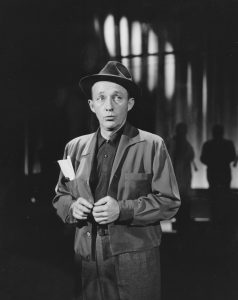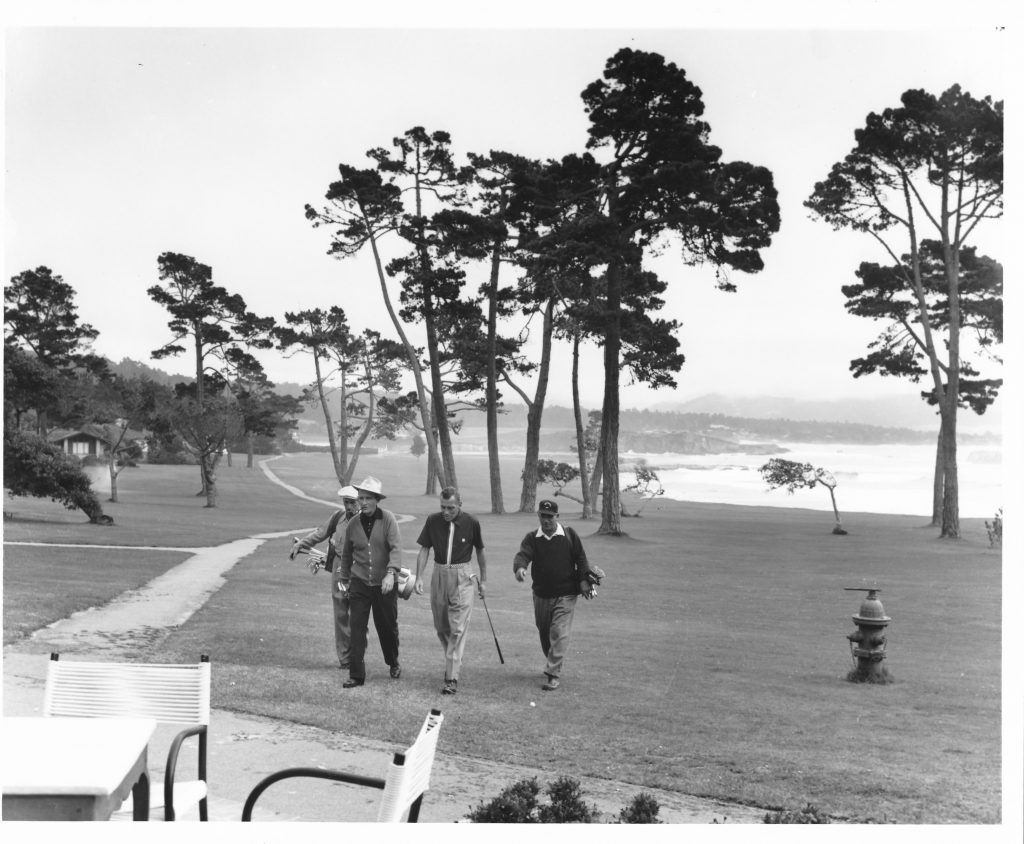
In honor of what would have been Bing Crosby’s 110th birthday, we would like to take a moment to reminisce on his great career. Bing Crosby was born Harry Lillis Crosby on May 3, 1903. A neighborhood friend gave him the nickname “Bing,” and it stuck for the rest of his life.
Crosby began his career singing and playing the drums in a local band called The Musicaladers while attending Gonzaga University. After he graduated in 1925, The Musicaladers broke up. Crosby, along with the band leader Al Rinker, moved to Los Angeles determined to make it in the music business. They were now known as The Rhythm Boys, and began touring with Paul Whiteman, leader of the most popular jazz band in the country. It was Bing who caught the eye of Whiteman, and he soon became one of the Paul Whiteman Orchestra’s most popular attractions. In 1928, he had his first number one hit with the Whiteman Orchestra, and made his film debut in “King of Jazz” (1930).
In 1931, Bing Crosby left the Whiteman orchestra and took on a solo career. He signed with CBS Radio to do a weekly 15 minute radio broadcast and almost immediately became a huge hit. From this point on Crosby was a radio, stage and film star as well as a top-selling recording artist.
As an actor, Bing Crosby is perhaps most fondly remembered for the series of seven musical “Road Pictures,” he starred in with Bob Hope (“Road to Morocco”, “Road to Bali”, etc.).
As a recording artist, Crosby’s biggest musical hit was his recording of the Irving Berlin classic “White Christmas” (1942), which became one of the best-selling recordings of all time.
Not only did Bing Crosby make a name for himself as a first-class performer, but also for his contributions to the advancement of recording technology in the late 1940’s. While a radio host, Crosby wanted to be able to pre-record his radio shows, which was not possible at the time. This desire led to the development of magnetic tape recording. History later repeated itself when he was asked to do a television show and demanded that it be pre-recorded, which encouraged the development of videotape.
It is fair to say that Crosby was at the pinnacle of the entertainment world from the Depression until the mid-1950’s. He was a singer, actor, radio celebrity, and a regular guest on variety programs. He was the kind of star Ed Sullivan liked to have on his show.
Bing Crosby appeared on The Ed Sullivan Show a total of 6 times between 1956 and 1968. From singing classic hits and talking about his films to playing golf and hitting a hole in one, his appearances on The Ed Sullivan Show truly showcased Crosby’s multiple talents! His last appearance on the show took place on May 5th, 1968, which was an Irving Berlin tribute show. That night Crosby co-hosted and, since it was an Irving Berlin special, he performed “White Christmas.”
Throughout his 50 year career, Crosby won 5 Academy Awards in various categories, collected 22 gold records, became the first recipient of the Grammy Lifetime Achievement Award (1962), and contributed to recording technology, among many other successes. All in all, Bing Crosby was undoubtedly one of the most popular and influential media stars of the first half of the 20th century.
Crosby died in 1977 while playing golf at a course outside Madrid, Spain. He had just completed a tour of England that included a sold-out engagement at the London Palladium.
Bing Crosby’s performance of “White Christmas” on The Ed Sullivan Show is available on the “Holiday Greetings from The Ed Sullivan Show” and “The Ed Sullivan Show: A Classic Christmas” DVDs.

